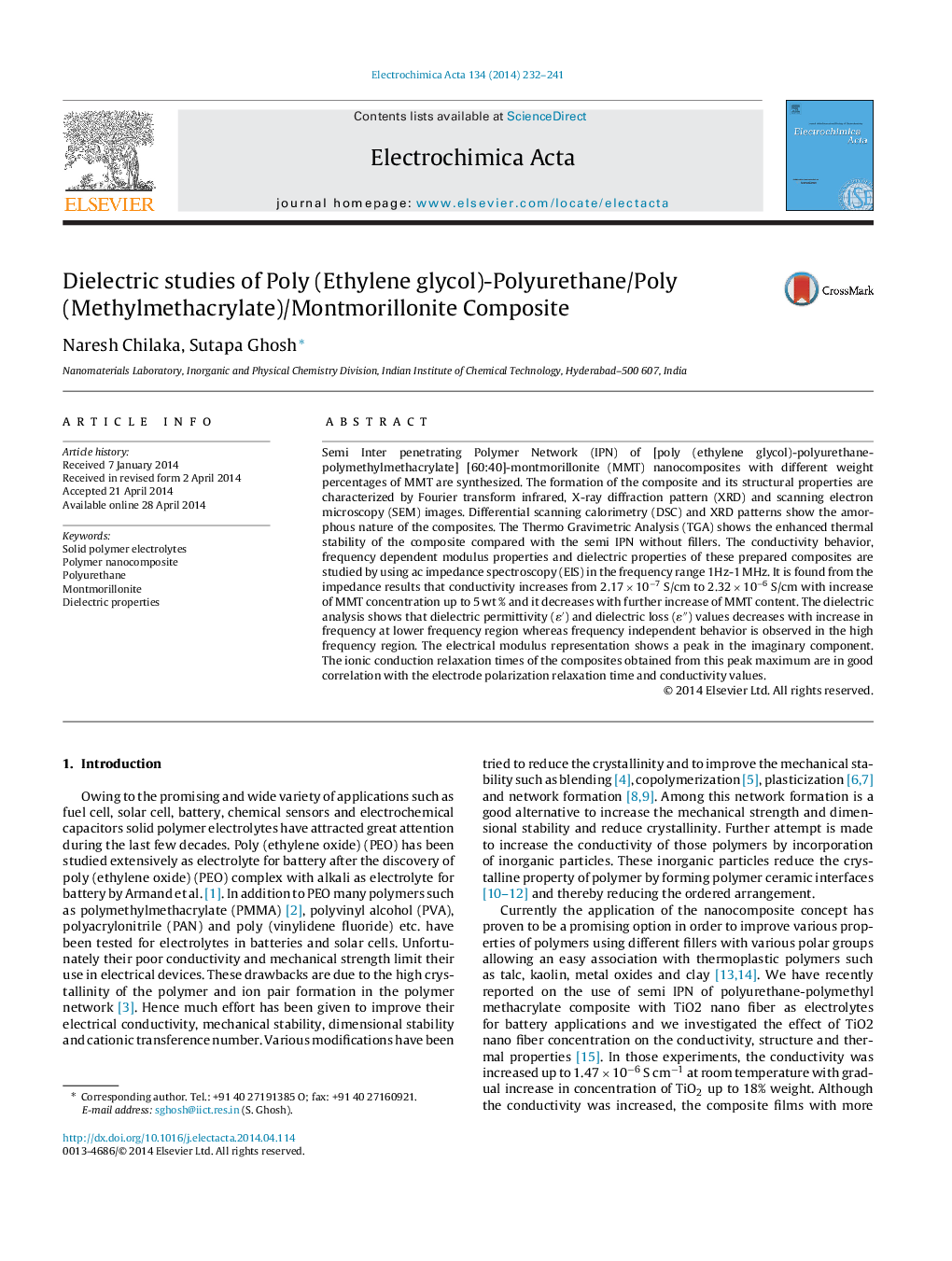| کد مقاله | کد نشریه | سال انتشار | مقاله انگلیسی | نسخه تمام متن |
|---|---|---|---|---|
| 185667 | 459601 | 2014 | 10 صفحه PDF | دانلود رایگان |

• Semi IPN composite of PEG-PU/PMMA with different wt % of MMT is synthesized.
• Formation of nanocomposite is confirmed by SEM, XRD and IR spectroscopic analysis.
• DSC and TGA analysis confirmed the enhanced thermal stability of the composite.
• Composite with 5 wt % of MMT is showing high conductivity of 2.32x l0−6 Scm-1.
Semi Inter penetrating Polymer Network (IPN) of [poly (ethylene glycol)-polyurethane-polymethylmethacrylate] [60:40]-montmorillonite (MMT) nanocomposites with different weight percentages of MMT are synthesized. The formation of the composite and its structural properties are characterized by Fourier transform infrared, X-ray diffraction pattern (XRD) and scanning electron microscopy (SEM) images. Differential scanning calorimetry (DSC) and XRD patterns show the amorphous nature of the composites. The Thermo Gravimetric Analysis (TGA) shows the enhanced thermal stability of the composite compared with the semi IPN without fillers. The conductivity behavior, frequency dependent modulus properties and dielectric properties of these prepared composites are studied by using ac impedance spectroscopy (EIS) in the frequency range 1Hz-1 MHz. It is found from the impedance results that conductivity increases from 2.17 × 10−7 S/cm to 2.32 × 10−6 S/cm with increase of MMT concentration up to 5 wt % and it decreases with further increase of MMT content. The dielectric analysis shows that dielectric permittivity (ɛ′) and dielectric loss (ɛ″) values decreases with increase in frequency at lower frequency region whereas frequency independent behavior is observed in the high frequency region. The electrical modulus representation shows a peak in the imaginary component. The ionic conduction relaxation times of the composites obtained from this peak maximum are in good correlation with the electrode polarization relaxation time and conductivity values.
Figure optionsDownload as PowerPoint slide
Journal: Electrochimica Acta - Volume 134, 10 July 2014, Pages 232–241